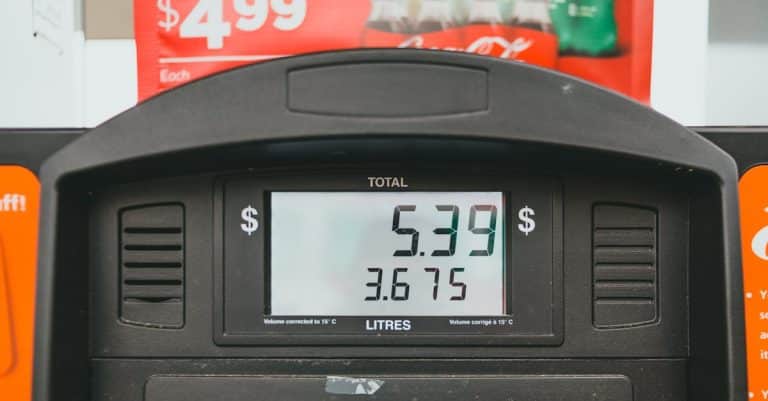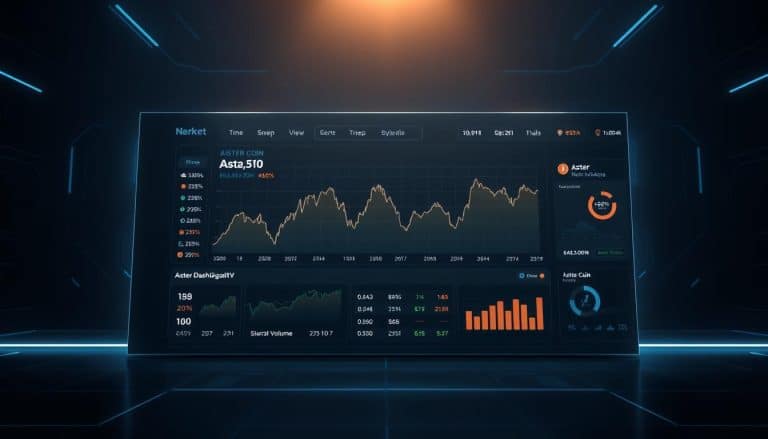Maximize Gains: How to Trade Cryptocurrency and Make Profit
Did you know the crypto market can swing 5-10% or more in a day? This big ups and downs offer both chances and risks for those looking to make a profit1. Learning to trade crypto for profit takes knowing the market, having a plan, and being disciplined.
Trading crypto is more than just buying low and selling high. Successful traders understand the market and technology well. They are also disciplined, patient, and good at managing risks2. With the right approach, you can tackle the market’s complexity and boost your earnings.
Key Takeaways
- The crypto market can see price changes of 5-10% or more in a single day1.
- Successful traders exhibit traits like market understanding, trading discipline, patience, and risk management2.
- Profitable trading strategies include day trading, swing trading, scalping, and position trading1.
- Effective crypto trading requires education, choosing the right exchange, and developing a solid strategy2.
- Maximizing gains involves continuous learning and adapting to market trends.
Are you ready to dive into cryptocurrency trading and learn how to increase profits? Let’s start this trip to change how you trade crypto and reach your financial goals.
Understanding Cryptocurrency Trading
Cryptocurrency trading offers investors a new and exciting way to make money. It doesn’t need a central authority, thanks to its blockchain technology3. We’ll cover the basics of cryptocurrencies, how to trade them, and the options you have for trades.
What is Cryptocurrency?
A cryptocurrency is an online currency secured by cryptography. It’s different from regular money because no central system controls it. Instead, it works on a decentralized network, mostly blockchain technology3. This setup makes cryptocurrencies quite secure and distinct.
How Does Cryptocurrency Trading Work?
Trading in cryptocurrencies means buying and selling these digital currencies on trading platforms. You can use centralized or decentralized exchanges for this. Many traders prefer these platforms to bet on price changes without actually owning the coins. They just need a small deposit3.
The cost of trading is affected by the spread – the difference between buying and selling prices3. Price changes are influenced by how big the coin’s market is, what the media says, and new rules3.
Types of Cryptocurrency Trades
There are several ways you can trade cryptocurrencies, depending on what you like and your trading style. These methods include:
- Spot Trading: This is buying or selling cryptocurrencies at their current price.
- Futures Trading: Here, you predict the price of a cryptocurrency in the future.
- Margin Trading: You borrow money to invest more, which can mean bigger wins or losses3.
- Trading Cryptocurrencies through CFDs: This method lets you bet on price movements without owning the currency, showing prices in dollars3.
- Algorithmic Trading: Trade orders are made automatically, based on preset rules4.
Each trading method has its own pros and cons. It’s important to pick the right strategy for you, thinking about what you want to achieve and how much risk you can handle.
Choosing the Right Cryptocurrency Exchange
Selecting the right cryptocurrency exchange is key for profitable trading. It’s a crucial step that impacts your success. You need to look at different factors to find a secure and efficient trading platform.
Factors to Consider When Choosing an Exchange
Here are important things to consider when choosing a cryptocurrency exchange:
- Security: Security is crucial due to hacking risks. Look for exchanges with strong security like two-factor authentication and cold storage.
- Fees: Fees can differ a lot. Look for low fees to boost your profits. Always check the fees before deciding.
- User Interface: The platform should be easy to use. A simple interface helps avoid mistakes and makes trading efficient.
- Supported Cryptocurrencies: Choose an exchange that supports many cryptocurrencies. This gives you more options for trading.
- Regulatory Compliance: Go for exchanges that follow regulations and KYC rules. It helps avoid scams and ensures legitimacy.
Top Cryptocurrency Exchanges in 2025
Check out these top cryptocurrency exchanges in 2025 for profitable trading:
| Exchange | Year Established | Location | Supported Cryptocurrencies | Transaction Fees | Unique Features |
|---|---|---|---|---|---|
| Kraken | 2011 | San Francisco | 200+ | 0.00% – 0.40% | Advanced trading features, margin and futures trading5 |
| Coinbase | 2012 | San Francisco | 5500+ | 0.00% – 0.60% | Insurance for digital funds, FDIC-insured USD balances5 |
| Crypto.com | 2016 | Hong Kong | 350+ | 0.00% – 0.075% | Extensive digital asset ecosystem, native token, crypto visa card5 |
| Gemini | 2014 | New York City | 80+ | 0.0% – 1.49% | SOC 2-certified, insured funds in hot wallets, two-factor authentication5 |
Centralized exchanges (CEX) are often the first choice for many traders because of their security. On the other hand, decentralized exchanges (DEX) offer peer-to-peer trades but can be hard to use6. Forbes Digital Assets ranked the top 60 crypto exchanges focusing on cost, quality, and safety, placing a high value on following the rules6. With nearly 600 exchanges worldwide, your choice should match your needs and goals6.
Setting Up Your Trading Account
Getting your trading account ready is your first big step in cryptocurrency trading. You need to take a few important steps to make sure your account is safe and set for trades.
Creating and Verifying Your Account
To start, pick a trustworthy platform like Plus500, eToro, or Coinbase7. Signing up is usually easy, asking for just your email and phone number. To verify your account, you’ll need to give some ID documents. This is to follow the KYC (Know Your Customer) rules. It makes trading safe for everyone.
Securing Your Trading Account
Keeping your trading account secure is crucial. Turn on two-factor authentication (2FA) for more security. Use strong, unique passwords and maybe a password manager. Be on the lookout for phishing attacks and update your security regularly.
Funding Your Account
Now, it’s time to put money in your account. You can use different methods like ACH deposits, which are usually free and cheap7. With money in your account, you’ll be ready to buy different cryptocurrencies and try out various trading strategies8.
Follow these steps, and you’ll be set to dive into crypto trading and find strategies that match your goals.
Learning Fundamental and Technical Analysis
To get started in crypto trading, knowing both fundamental and technical analysis is key. They help make smart decisions in the unpredictable world of cryptocurrency.
Fundamental Analysis Explained
Fundamental analysis looks at a cryptocurrency’s true value. It includes checking out the project’s whitepaper, the team behind it, its tech, market trends, and economic factors. Checking a whitepaper and the team’s background helps predict if a project will do well. Projects with detailed whitepapers and skilled teams usually perform better in the market9.
It’s also important to understand the project’s tokenomics and future plans. This information helps figure out if the project can grow and succeed in the long run9.
Technical Analysis for Crypto Trading
Technical analysis, however, uses numbers and chart patterns to guess future prices. Key tools include the Relative Strength Index (RSI) and Moving Average Convergence Divergence (MACD)10. Candlestick charts, showing patterns like doji and hammers, are very helpful too10.
Traders use these methods to spot when to buy or sell. They look for signs of new trends or price changes. It’s a crucial skill for effective trading strategies11.
Top Tools for Technical Analysis
There are several great tools for technical analysis in crypto trading. They include:
- Relative Strength Index (RSI): This shows if a coin is overbought or oversold, on a scale from 0 to 10010.
- Moving Average Convergence Divergence (MACD): Helps identify market trends and changes using moving averages10.
- Candlestick Charts: Help see price movements and trends through specific patterns10.
Combining these tools with fundamental analysis gives a full picture of the market. This improves your chances of creating successful crypto trading strategies11.
Developing a Trading Strategy
Creating a solid trading strategy is key for success in cryptocurrency trading. Many spend a lot on finding good strategies12. It’s important to know that a strategy doesn’t have to be perfect to make profits. Even partial success can bring consistent gains over time12.
First, you should set clear goals based on how much risk you’re okay with. You might want quick wins through swing trading or aim for value growth over time. Cryptocurrencies have grown into a significant asset class, making planning more important than ever13.
Backtesting lets you check past performance to see how well your strategy would have done. It shows if your strategy is likely to work and helps you tweak it as needed. Things like market depth, chart signals, and news can all affect your trading outcomes14.
It’s crucial to keep refining your approach. The crypto market is always on, so you must be ready to adjust. Technical analysis tools and staying up-to-date on financial news are vital. They help find the best times to buy or sell for profit14.
Keeping a trade journal is also helpful. It can show you what works and what doesn’t, letting you make better choices. Learning from your trade history builds confidence, helping you stay on track through ups and downs. Certain currencies like Bitcoin and Ethereum are preferred for their stability and trading volume14.
By 2030, it’s expected that cryptocurrencies will make up 25% of national currencies. This stresses the need for a strategy that can evolve with the market13. So, it’s important to always learn and improve your trading tactics for success.
For detailed insights on market forecasts, check out this report on XRP’s growth potential by industry experts.
Risk Management in Cryptocurrency Trading
When you trade cryptocurrencies, knowing how to manage risk is key for lasting success. The volatile cryptocurrency market brings its own challenges. It’s key to handle your risk smartly.
Understanding Volatility and Risk
The volatile cryptocurrency market swings in price a lot. For example, Bitcoin once fell 77% from its highest value15. Low trading volumes can make some cryptocurrencies easy for big traders to influence15.
Making decisions based on fear, like selling in a panic or buying because you’re afraid to miss out, often leads to losses15. So, managing risk well is important to keep your money safe and stay level-headed15.
How to Set Stop-Loss Orders
Using stop-loss orders is a key way to control risk. They automatically sell your asset if its price drops to a certain point. Short-term traders might set their stop-losses at 5%, while those thinking long-term might go for 20%16.
Tools like trailing stop orders and taking profit orders from crypto exchanges can also help you manage risk better16.
The Importance of Diversification
Spreading your investments across different assets helps manage risk. This way, if one investment does poorly, it doesn’t hurt as much. Investing in a variety of cryptocurrencies can be a smart move16.
It’s also wise to limit how much you invest in a single trade. Experts suggest no more than 2% of your capital16.
To sum it up, being good at managing risk and understanding the volatile cryptocurrency market can really boost your trading skills. By using stop-loss orders and spreading out your investments, you can face this ever-changing market with confidence.
Using Leverage in Crypto Trading
Leverage helps you boost possible returns by borrowing funds from brokers, making your trades bigger and potentially more profitable17. Understanding leverage, its risks, and how it differs between spot and derivatives trading is key. This part will make sure you know enough to make smart trading choices.
What is Leverage?
Leverage lets you handle bigger trades than your budget would normally allow by borrowing from brokers17. For example, with 10x leverage, you can trade $10,000 using only $1,000 of your money18. This can lead to bigger wins but also bigger losses, since they’re based on the larger amount18.
Risks and Benefits of Leverage
Leverage in crypto trading can majorly increase profits17. Big leverage, like 1:50, can lead to serious gains if the market goes your way17. But, the higher the leverage, the bigger the risk of losing a lot, especially if the market turns quickly18. Cryptocurrency’s fast price changes can force you out of your position18. It’s crucial to manage your risk wisely, for instance by setting stop-loss orders and not putting all your eggs in one basket18.
Leverage in Spot vs Derivatives Trading
Leverage works differently in spot and derivatives trading. In spot trading, you’re dealing with the actual crypto, using an order book on exchanges19. You borrow money to increase your spot market position. Derivatives trading, on the other hand, means dealing with contracts like futures and options18. You’re predicting crypto price movements without owning any crypto, often using leverage. Spot trading is more direct, while derivatives offer more complex strategies and ways to protect your investments.
The table below compares how leverage is used in spot versus derivatives trading:
| Aspect | Spot Trading | Derivatives Trading |
|---|---|---|
| Leverage Ratio | Usually lower, e.g., 2x, 5x19 | Can be much higher, up to 100x18 |
| Asset Ownership | You own the actual crypto19 | No real asset ownership, it’s speculative18 |
| Risk Level | Moderate, because you hold the crypto19 | High risk, because it’s all about speculation18 |
| Market Entry | You buy or sell directly in the market19 | It’s all about betting on contract outcomes18 |
| Main Use | It’s for making your trading position bigger19 | Used for hedging and speculative plays18 |
Popular Cryptocurrency Trading Strategies
There are many strategies in cryptocurrency trading for various styles and time commitments. It’s important to know each method to pick the best one for your goals and how much risk you’re willing to take.
Day Trading
Day trading involves making many trades in one day to profit from short-term price changes. Traders need to understand market trends and technical analysis well. To help, many use bots and tools designed for day trading in the volatile crypto market20. This helps manage the risks that come with the territory21.
Swing Trading
Swing trading means keeping a position open for days or weeks to benefit from market shifts. It’s great for those who find day trading too busy. Traders can catch gains from both rising and falling prices20. They use tools like the RSI and MA crossovers to find good times to buy and sell21.
Scalping
Scalping is all about quick, small profits all day. Positions are opened and closed in moments to snatch small price differences21. This method demands constant market watching, suited for those ready to commit. Despite smaller gains, trading a lot makes it profitable22.
Position Trading
Position trading, or trend trading, is for the long haul – weeks to months22. It focuses on following long-term trends for big profits. Traders look for clear uptrends or downtrends to guide their trading decisions22. This method is less intense since it doesn’t need constant market watch. It goes well with spreading out your investments to lower risk21.
How to Trade Cryptocurrency and Make Profit
Trading cryptocurrency can lead to big profits if you use smart strategies. Focus on boosting gains and managing losses well. Let’s look at important tactics and real examples to guide you.
Maximizing Gains
Profit from trading cryptocurrency comes from knowing the market. Use technical analysis and track market mood to know when to buy or sell. Price changes daily offer many chances to earn23. It’s also smart to invest in different coins, like Bitcoin and Ethereum. This can lower your risk and increase chances for profit24.
Yield farming is another good strategy. By lending your crypto on platforms like Uniswap and Pancakeswap, you earn interest23. This can give you stable returns when the market is good. Also, using leveraged derivatives like CFDs can make your earnings bigger8.
Managing Losses
It’s critical to handle losses well to stay profitable. With the market’s ups and downs, use stop-loss orders to limit losses. This lets you set exit points to protect your investment. News and rules changes can greatly affect the market, showing the need for a good risk plan23.
Keep an eye on market shifts and adapt your plans. Be careful with leveraged trading because it can lead to big losses. Watching prices closely and choosing low spreads can help you deal with market swings8.
Real-Life Trade Examples
Look at a Uniswap liquidity provider who got tricked by a phishing scam in July 202223. It shows the importance of protecting your accounts. However, traders who bought Bitcoin low and sold high made a lot of profit23.
An Ethereum trader made smart moves by reading the market trend. With technical analysis and stop-loss tools, the person made good money while keeping losses low8. These stories show how well-chosen strategies and risk control can lead to success.
In conclusion, to earn from cryptocurrency trading, focus on increasing gains and managing losses. Using real examples and tested methods can really boost your results. This puts you on a path to success in the fast-moving crypto market.
Tools and Resources for Crypto Traders
As a crypto trader, using the right tools can greatly change your success. Tools give you live data and insights to make smart choices. They help you understand the market better.
Trading Platforms
Choosing a strong trading platform is key. Sites like CoinMarketCap, CoinGecko, and TradingView offer vital analysis25. eToro, BitMEX, and Bybit let you trade more advanced25. Binance and Kraken let you trade over 200 cryptocurrencies with low fees, like 0.26% at Kraken Pro26.
Educational Resources
Learning more about the market is crucial. CryptoCompare, CoinDesk, and Investopedia have great learning content25. Ivan on Tech has over 30 blockchain and cryptocurrency courses27. For predicting market moves, tools for tracking values and using advanced charts are essential. Cointree provides a detailed look at these trader tools27.
Adding these tools to your trading can improve your skills. They give you the knowledge and data for smarter decisions. Keep learning and stay up to date to navigate the crypto market.
Earning Passive Income with Cryptocurrency
Looking into passive income crypto is exciting for many who love crypto. Staking, yield farming, and lending are ways to make extra money. These methods can add to what you make from trading.
Staking
By staking, you help the blockchain work and get rewards, like a savings account’s interest. Sites like Coinbase and Kraken let you start earning these rewards28. Yet, beware: the SEC warns that staking on exchanges might be risky28. Staking is also easier and needs less tech-know-how than mining28.
Yield Farming
Yield farming puts your crypto into DeFi platforms for likely high returns29. But remember, the bigger the reward, the bigger the risk due to market changes30. If you’re eyeing yield farming, balance the possible gains with the risks.
Crypto Lending
Crypto lending gives a more reliable income by lending out your crypto29. Platforms like Compound make it happen28. Still, think about the risks, like not getting paid back30. Sadly, some platforms faced bankruptcy, which could mean losing your crypto28.
Knowing these passive crypto income methods, such as staking, yield farming, and lending, helps you make smart decisions and possibly get better returns in the crypto world.
Tax Considerations and Legal Implications
Understanding how to handle taxes on cryptocurrencies is key for traders. The IRS sees cryptocurrencies as property. This means they’re taxed like other assets31. You’ll need to track all your transactions carefully.
Understanding Crypto Taxation
Dealing with crypto taxes can get tricky. You might be buying, selling, staking, or even spending your digital money. Each action could affect your taxes. Miners have the chance to subtract business costs32. Remember, taxes also apply to initial coin offerings and DeFi activities31.
Reporting Your Crypto Earnings
It’s up to every crypto owner to report their trades to the IRS. Sadly, in 2022, only about 1.62 percent of U.S. crypto holders did this32. Not reporting correctly could lead to big fines or worse33. Crypto tax software makes reporting easier. It can gather your transaction data from different places and prepare your tax reports31.
Regulatory Considerations
The rules for cryptocurrencies are always changing. It’s important to keep up with these changes. Since there’s no Form 1099 for crypto, not reporting can cause problems32. Joining forums and using educational materials can keep you informed31. Also, gifting more than $17,000 in crypto in 2025 might trigger gift taxes. Knowing the legal side of your crypto dealings is crucial32.
Here is a comparison of key points:
| Factor | Detail |
|---|---|
| Crypto as Property | Classified by IRS3331 |
| Form 1099 | Not issued for crypto transactions3332 |
| Reporting Rate | 1.62% of owners reported to IRS in 202232 |
Successful Cryptocurrency Trading Tips
Starting in cryptocurrency trading is thrilling but can also be overwhelming. With the correct knowledge and strategies, you’re on your way to success. It’s also essential to know how to sidestep common trading mistakes.
Tips for Beginners
Here are some helpful cryptocurrency trading tips for beginners:
- Begin with a demo account. This lets you learn about the market without risking your money34.
- Learn the basics of cryptocurrencies like Bitcoin and Ethereum. Understanding how they work is key34.
- Use educational resources such as news, books, and podcasts to grow your knowledge34.
- Have clear trading goals and risk management strategies. This helps you trade with discipline35.
- Study market trends and economic news to make smart trading decisions34.
- Use tools like Moving Averages and MACD to back up your trading decisions35.
Common Mistakes to Avoid
To prevent unnecessary losses, avoid these common crypto trading mistakes:
- Don’t let emotions guide your trading. Keep a cool head to reduce risks34.
- Avoid making too many trades. Stick to your trading plan to prevent rash decisions35.
- Spread your investments across various cryptocurrencies to lessen the risk35.
- Keep up with the latest news. Crypto prices are often moved by major events35.
- Choose a reputable exchange with good fees to protect your returns35.
- Always use stop-loss orders to safeguard your investments, especially in CFD trading35.
Conclusion
The world of cryptocurrency trading is full of chances and challenges. The market can change fast, leading to big wins or losses in a day36. To win at cryptocurrency trading, you need a good plan, current market knowledge, and strong risk control.
Good trading strategies include making realistic money goals, knowing the ups and downs of the market, and having different ways to make money. Traders who do well usually have extra income sources besides trading. This helps them deal with the stress of market changes36. Also, remember that trading fees can add up, so it’s important to keep costs low37.
Learning more about the market and trading tools is key for those who want to go deeper. Staying updated can really improve your trading skills36. Whether you’re in it for the long haul or making quick trades, knowing about different cryptocurrencies and how they act in the market is crucial. For deep insights into earning from trading and exchanging crypto, check out Brave New Coin.









 Bitcoin
Bitcoin  Ethereum
Ethereum  Tether
Tether  XRP
XRP  USDC
USDC  Lido Staked Ether
Lido Staked Ether  TRON
TRON  Dogecoin
Dogecoin  Cardano
Cardano  Figure Heloc
Figure Heloc  Bitcoin Cash
Bitcoin Cash  Wrapped stETH
Wrapped stETH  WhiteBIT Coin
WhiteBIT Coin  Wrapped Bitcoin
Wrapped Bitcoin  Wrapped eETH
Wrapped eETH  Chainlink
Chainlink  USDS
USDS  Binance Bridged USDT (BNB Smart Chain)
Binance Bridged USDT (BNB Smart Chain)  LEO Token
LEO Token  WETH
WETH  Zcash
Zcash  Monero
Monero  Stellar
Stellar  Coinbase Wrapped BTC
Coinbase Wrapped BTC  Sui
Sui  Hyperliquid
Hyperliquid  Litecoin
Litecoin  Ethena USDe
Ethena USDe  Avalanche
Avalanche  Canton
Canton  Shiba Inu
Shiba Inu  Hedera
Hedera  World Liberty Financial
World Liberty Financial  Toncoin
Toncoin  sUSDS
sUSDS  USDT0
USDT0  Dai
Dai  Cronos
Cronos  Uniswap
Uniswap  Polkadot
Polkadot  PayPal USD
PayPal USD  Ethena Staked USDe
Ethena Staked USDe  Mantle
Mantle  USD1
USD1  Pepe
Pepe  Rain
Rain  MemeCore
MemeCore  Aave
Aave